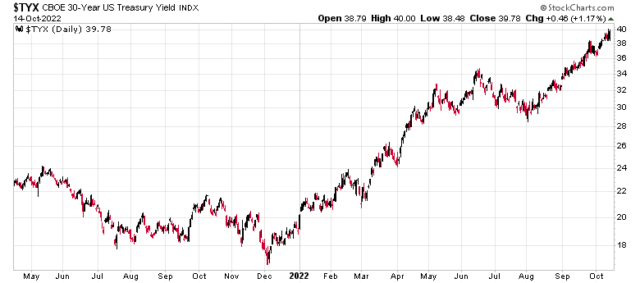Tiff Macklem gave a speech today in Halifax, trying to rationalize getting blindsided by inflation. Key quote:
At the time, we assessed that the effect of these global forces on inflation was likely to be transitory. Historical experience has taught us that supply disturbances typically have a temporary effect on inflation, so we tend to look through them. A year ago we expected inflation in goods prices to moderate as public health restrictions were eased, production ramped up and investment in global supply chain logistics picked up. In hindsight, that turned out to be overly optimistic.
I’m surprised his speechwriters haven’t sanitized the word “transitory” out of his vocabulary yet.
The forward-looking payload of his speech is on the “Inflation Expectations” sub-heading. Essentially the Bank of Canada is on a mission to target inflation expectations, rather than inflation itself because the key risk is entrenchment of expectations:
That’s why we are so focused on measures of expected inflation. We use a range of surveys and market-based measures to assess expectations of future inflation, and they show us that near-term expectations have risen. Survey results also indicate that consumers and businesses are more uncertain about future inflation and more of them expect inflation to be higher for longer. So far, longer-term inflation expectations remain reasonably well anchored, but we are acutely aware that Canadians will need to see inflation clearly coming down to sustain this confidence.
They will keep raising rates until they’ve triggered this sentiment, which is likely to happen when the labour market has transformed into one where people are grateful for employment (read: no more upward wage pressure) and the economy goes into the tank.
Until things blow up, my nominal trajectory for Canadian short-term interest rates will be:
October 26, 2022 – +0.50% to 3.75% (prime = 5.95%)
December 7, 2022 – +0.25% to 4.00% (prime = 6.2%)
January 25, 2023 – +0.25% to 4.25% (prime = 6.45%)
March 8, 2023 – +0.25% to 4.50% (prime = 6.7% – think about these variable rate mortgage holders!)
Note that the Bankers’ Acceptance futures diverge from this forecast – they expect rate hikes to stop in December.
We might see the Canadian 10-year yield get up to 375bps or so before this all ends, coupled with the Canadian dollar heading to the upper 60’s.
Recall that interest rates only started to rise on March 2, 2022. It typically takes a year for these decisions to permeate into the economy (capital expenditures cannot start and stop on a dime unlike interest rate futures).
By the end of the first quarter of 2023, things will have gone sufficiently south that people will be begging and pleading for a stop to the torture. There will obviously be a decline in discretionary demand by this point. The question is whether this will actually impact inflation expectations. I’m not so sure – expectations is also a function of public confidence and the question is whether we have seen anything to actually restore confidence – I don’t see anything on the horizon in this respect.
The litmus test is the following – say somebody handed you a stack of $10 million dollars and gave it to you a 10-year rate fixed at the current prime rate (5.45%) (which is a luxury only investment grade corporations would get at the moment). What would you do with it?
Probably most of you reading this would say “invest it in XYZ”, but say I put a future condition on the loan, which would be that you actually had to invest it in a physical capital project involving machinery and equipment and the like (and not through the construction of yet another self-storage facility either!). What would you put your money into?

